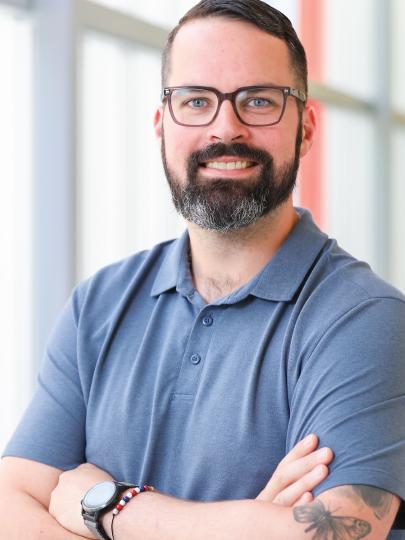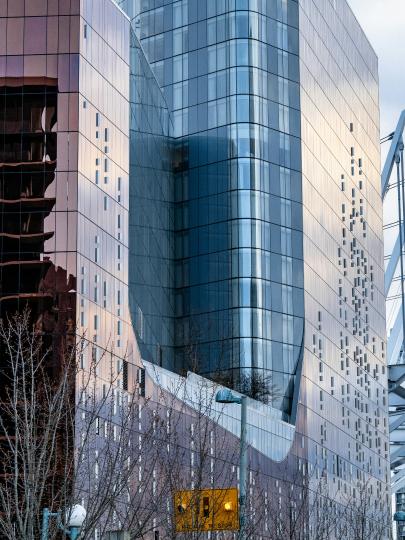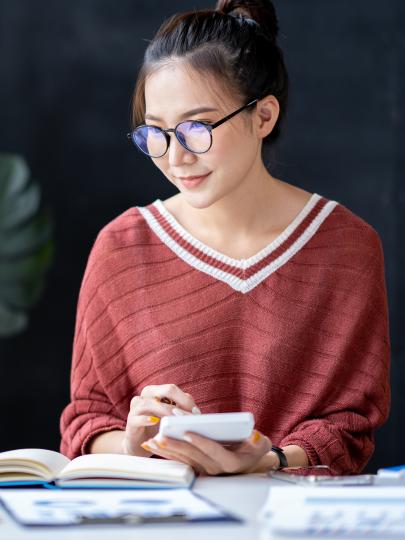Oral History
Wearing a dirty straw cowboy hat, grey t-shirt, suspenders and jeans, Jack Ward, 73, sips coffee at a wooden table in Lee’s Corner Gas coffee shop along Highway 20, west of Williams Lake in British Columbia’s Chilcotin region. Ward’s deeply tanned face is as weathered as an old log, the result of decades spent on horseback herding cattle, keeping a watch out for wolves and thieves. “Back in ’82 or ’83 we lost 21 of our herd to cattle rustlers,” he reminisces, surrounded by the shop’s collection of stuffed wild animals, including a shabby, snarling mountain lion.
Ward is at the store, which was founded in 1891 as a trading post, gathering his nerve for a trip to the dentist – his first since the 1970s. “Had a bad experience,” he explains. A dentist had responded to Ward’s complaint of an achy tooth by poking the offending molar with a periodontal probe. Ward, whose mouth wasn’t frozen yet, nearly ricocheted out of the dental chair. He never visited a dentist again. And this, says Ward, displaying two desolate rows of teeth – three upper and four lower, as grey and askew as neglected tombstones – is the sorry result.
Ward’s date with dental destiny would take place later that day at the Anaham reserve, a short drive west along Highway 20, where students from UBC’s Faculty of Dentistry are running a three-day clinic. This is the fourth year that UBC dental and hygiene students have made the July trip to provide free dental care to Anaham residents. The volunteer initiative is a partnership between UBC and the Richmond, BC-based non-profit group Dental Mission Project, which provides the equipment and supplies needed to set up mobile clinics in far-flung communities like Anaham as well as in the developing world.
The fact that the clinic is free – in addition to a health‑centre nurse’s insistence that Ward deal with the infection caused by his rotting teeth – has helped him muster up the courage to face a dentist for the first time in nearly half a century. “I’m on a pension, so I can’t afford a dentist,” says Ward, who is Aboriginal only on his mother’s side and thus not eligible for Health Canada’s First Nations and Inuit Health dental benefits.
Neglect as severe as Ward’s isn’t unusual among the 83 patients that the 16 UBC dental students and four UBC dental hygienists see during their stay at the reserve, home to the Tl’etinqox-t’in, one of six separate bands that make up the Chilcotin First Nation. The three‑day undertaking, which takes place every summer, may seem like a stopgap measure in a community whose members – children to adults – not only suffer a myriad of dental problems but are woefully uninformed about oral hygiene. The clinic, however, with its eager students supervised by UBC dentistry faculty, is part of a sea change that is helping the Chilcotin people to not only establish a foundation of community health but also to extricate themselves from the psychological and physical horrors of the residential school system. In a small but significant way, the clinic is helping rectify some of the tragic history between European settlers and Canada’s Aboriginal peoples.
Some residential schools used veterinarians rather than dentists to care for pupils’ teeth, generating a life-long fear of dentistry.
“For us, because of the residential school system, dental work is very intimidating, especially for our elders,” says Anaham chief Joe Alphonse, dressed in cowboy hat, jeans and meticulously pressed shirt. He notes the importance of the temporary clinic being set up on the reserve: “Coming into our home to do this work – it’s part of our healing.” Alphonse is also tribal chairman for all six bands that make up the 5,000-strong Tsilhqot’in (Chilcotin) nation, which means “People of The River.” In addition to the Tl’etinqox‑t’in (Anaham) band, there are the Yunest’in (Stone), Xeni Gwet’in (Nemiah), Tl’esqoxt’in (Toosey), Tsi Del Del (Redstone) and ?Esdilagh (Alexandria) bands.
UBC dean of Dentistry Charles Shuler, who isn’t present this July but has attended Anaham clinics in the past, says that some residential schools used veterinarians rather than dentists to care for pupils’ teeth, generating a life-long fear of dentistry. “I was stunned when I first heard this,” says Shuler. “The elders said, ‘they treated us like animals.’” The result is that many former residential school residents avoid dentists for a lifetime and end up losing their teeth. Until recently, the Anaham reserve had a day school that was run by Catholic nuns, and these students returned home at the end of the day. However, many other Chilcotin children were sent to St. Joseph’s Indian Residential School, also known as Cariboo Indian Residential School, on the outskirts of William’s Lake.
The UBC dental students have developed a reputation for patience and kindness, helping nurture a dentist-positive outlook with youngsters like nine-year-old Safire.
In “The Children’s Oral Health Initiative,” recently published in the Canadian Journal of Public Health, lead author and UBC pediatric dentistry assistant professor Dr. Kavita Mathu-Muju wrote that First Nation and Inuit children have higher rates of tooth decay and untreated dental caries than other Canadian children. Among Aboriginal children aged three to five, 85 per cent had decay. The average number of decayed, missing or filled primary teeth was 8.22 per child. Nearly half (49 per cent) of the decayed teeth were untreated.
In comparison, the UBC dental students have developed a reputation for patience and kindness, helping to nurture a dentist-positive outlook with youngsters like nine-year-old Safire ShaNeil Lovett Cooper. Safire has just been dropped off by her mom at the Tl’etinqoxt’in Health Services building for a checkup. She’s nervous and has to be coaxed into climbing onto the dental chair. Dental students Amar Dev and Emily Thong, as well as Dr. Kelvin Leung, who graduated from UBC dental school this past June, take their time examining Safire’s teeth. They find eight cavities on her permanent molars and diagnose the white spots speckling her front teeth as pre-cavity lesions. The discovery is, perhaps, not surprising. Safire recounts what she had for breakfast: Cocoa Puffs, and admits that her favourite things to drink are juice and bottled ice tea. Thong takes the time to explain to Safire the danger of “sugar bugs:” sweet things contain sugar that in turn creates acid, which eats away the teeth. Safire, who later says that she stayed calm during the examination by “thinking about horses,” leaves happy, gripping a new toothbrush in her favourite colour of purple.
The long-term treatment plan needed to deal with Safire’s raft of cavities is beyond the UBC clinic’s capabilities. This is where Dr. Christine Constabel comes in. Constabel is on contract with the Tsilhqot’in National Government to provide dental care three days a month to Anaham band members and one day a month to members of nearby Nemiah reserve. A retired associate at Cariboo Dental Clinic in William’s Lake and a part-time dentistry faculty member at UBC, Constabel says that the annual student dental mission helps improve her efforts to boost oral health awareness in the community, as many people attend the clinic who normally wouldn’t bother going for a checkup. “It’s a bit of a happening event; sometimes I compare it to a circus coming to town,” says Constabel, who sports a short blond bob and wire rim glasses. “I have a reputation to be quite friendly and not so scary, yet the students are a bigger draw – gentle and kind.” The trust generated by the students is invaluable, she says, helping her build rapport with the community.
As it turns out, Jack Ward’s courage doesn’t fail him on the drive to Anaham’s Tl’etinqox-t’in Health Services building, and he trudges into the clinic room and sits down in a dental chair. He will be examined by Nick Aytoğlu, a fourth-year student, and third-year student Kimberly Paterson. Ward’s fear and trepidation are evident from the outset:
“If I’m in pain,” he blusters to Aytoğlu, “I’m going to grab your testicles!”
“They are there for you to grab anytime,” Aytoğlu counters good-humouredly.
Aytoğlu and Paterson can tell that there is no saving Ward’s teeth, which include five molars, some ground down to the roots, in addition to the seven decaying front ones. Aytoğlu, however, errs on the side of diplomacy, giving Ward the final decision on the fate of his frail chompers. It turns out that Ward wants them pulled so he can get dentures. After thoroughly freezing both sides of Ward’s mouth, Paterson and Aytoğlu set to work.
Aytoğlu refers to Ward throughout the procedure as “boss” – an acknowledgement that the patient is in charge. Aytoğlu and Paterson extract four teeth and ask Ward to return the following day to extract the remaining eight. Afterwards, they help initiate arrangements for Ward to see a denturist, who will fit him for dentures once the extractions have healed in six weeks’ time. Aytoğlu advises Ward – a heavy smoker since age 13 – to cut back on the cigarettes to support recovery. Upon leaving Tl’etinqox-t’in Health Services, however, Ward stops to light up.
Dr. Bill Brymer, who retired this past June as a clinical assistant professor at UBC’s Faculty of Dentistry, is one of the dentists supervising the students. On the second morning, he gives them a lecture on pain management. Pain is a pivotal issue with First Nations peoples, especially those who endured a stint in a residential school, he explains. When they protested any kind of uncomfortable treatment there, they were “clipped over the head and told to shut up and bear it.” This conditioning at the hands of residential school abusers makes them too fearful to speak up if they feel pain because their mouths aren’t properly frozen. “So triple-check your freezing,” is Brymer’s advice. “This is what will make you successful in dentistry – your patients know you won’t hurt them.” A reputable practice isn’t based upon having the latest high-tech equipment, nor upon impressive medical lingo, he adds. “Avoid the jargon, or a young patient will get really scared. And smile.”
It is a valuable lesson for the budding dentists, who upon graduation often face student debts of $200,000 or more and might fall into the business model trap of “drill, fill and bill.” Brymer says that treating people like those in Anaham, or the residents of Vancouver’s poverty-stricken Downtown Eastside, where UBC dental students also hold free clinics, is a way to give back. “Students who give back tend to be way happier and have a more centred life,” he says.
The students provide more than $20,000 in free dental services to the people of Anaham and members of the surrounding communities. In return, they experience a cultural immersion that is a striking contrast to their urban, university milieu. In the evenings, they learn to play the traditional Aboriginal game Lahal, a ferociously competitive guessing game played with sticks that pits two teams against one another. They raft down the Chilcotin River past the American White Pelican nesting site. Others opt to go fishing for spring salmon in the Chilcotin’s turgid, green-brown waters. The students try bannock, a traditional bread that is a staple in many Aboriginal diets, as well as smoked, dried venison and the red fruit of the soapberry. Anaham council member Cecil Grinder also has the students partake in the legend of the broken circle. He says the experience, which is acted out by participants, shows how the residential school system removed children from their parents and elders, leading to the loss not only of language but also of meaning in the lives of Aboriginal families and communities, and causing people to turn to drugs and alcohol to numb the pain.
“We got to work on much more challenging things than we see at school,” says Nick Aytoğlu. “It was an amazing experience.” Third-year student Viktoria Kirsten agrees. “The people here are super friendly and have so much to share,” she says. “They are teaching us so much more than we give them.”
Follow UBC Dentistry @ubcdentistry
Header photo courtesy of Tallulah Photography.





































